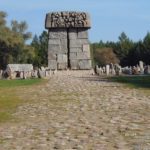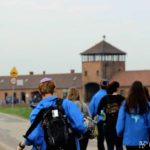All over the world, Auschwitz has become a symbol of terror, genocide, and the Holocaust. It was established by Germans in 1940, in the suburbs of Oswiecim, a Polish city that was annexed to the Third Reich by the Nazis. Its name was changed to Auschwitz, which also became the name of Konzentrationslager Auschwitz.
The direct reason for the establishment of the camp was the fact that mass arrests of Poles were increasing beyond the capacity of existing “local” prisons. The first transport of Poles reached KL Auschwitz from Tarnów prison on June 14, 1940. Initially, Auschwitz was to be one more concentration camp of the type that the Nazis had been setting up since the early 1930s. It functioned in this role throughout its existence, even when, beginning in 1942, it also became the largest of the death camps.
Auschwitz II-Birkenau
Birkenau was the largest of the more than 40 camps and sub-camps that made up the Auschwitz complex. During its three years of operation, it had a range of functions. When construction began in October 1941, it was supposed to be a camp for 125 thousand prisoners of war. It opened as a branch of Auschwitz in March 1942, and served at the same time as a center for the extermination of the Jews. In its final phase, from 1944, it also became a place where prisoners were concentrated before being transferred to labor in German industry in the depths of the Third Reich.
The majority—probably about 90%—of the victims of Auschwitz Concentration Camp died in Birkenau. This means approximately a million people. The majority, more than nine out of every ten, were Jews. A large proportion of the more than 70 thousand Poles who died or were killed in the Auschwitz complex perished in Birkenau. So did approximately 20 thousand Gypsies, in addition to Soviet POWs and prisoners of other nationalities.












































